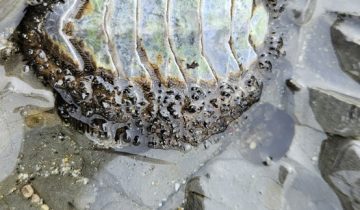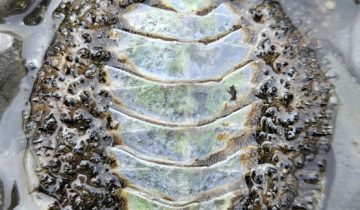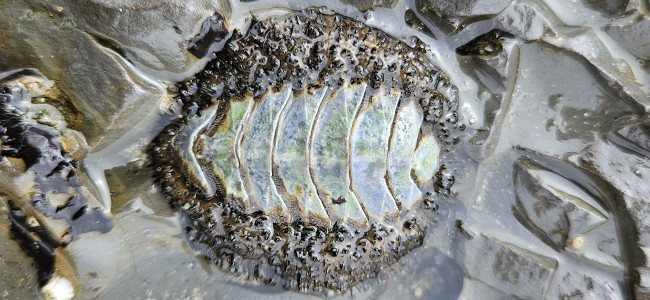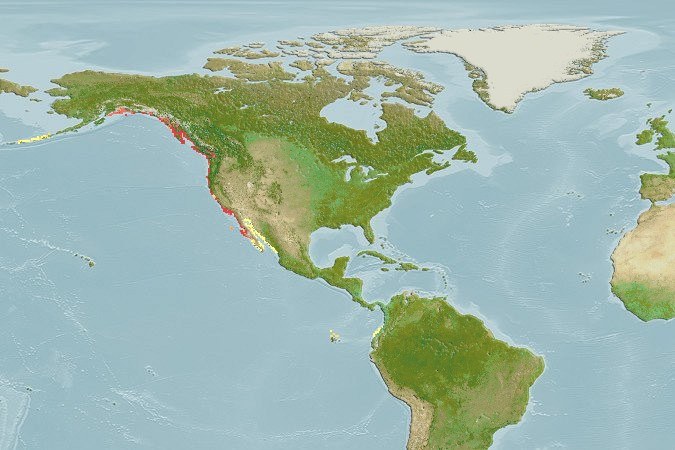Mopalia muscosa, commonly known as the mossy chiton, is a marine mollusc species belonging to the order Chitonida and the family Mopaliidae, within the class Polyplacophora. Its scientific name derives from the genus Mopalia, characterized by chitons with a prominent girdle, and the epithet muscosa refers to its mossy appearance due to the abundant long, stiff bristles on its girdle. It inhabits the mid to low intertidal zones of exposed rocky shores in the northeastern Pacific, ranging from the Queen Charlotte Islands in Canada to Cedros Island in Baja California, Mexico. It is also found in estuaries and areas with moderate wave action.
Mopalia muscosa has a body up to 9 cm long, although individuals between 3 and 5 cm are more common. Its most distinctive feature is its wide girdle covered by a dense mass of long, stiff, rubbery bristles, giving it a mossy appearance. The eight dorsal plates forming its shell are dull in color, ranging from brown, grayish-green to dark olive, often eroded or covered by algae, barnacles, or limpets. The ventral surface of the plates, however, is surprisingly turquoise blue. Under ultraviolet light, some areas of the girdle may show greenish biofluorescence. To differentiate it from similar species such as Mopalia lignosa, note that the latter has thinner, more flexible bristles, whereas Mopalia muscosa has more robust and straight ones.
Mopalia muscosa is primarily herbivorous, feeding at night or when submerged by high tide. Its diet mostly consists of red and green algae such as Mastocarpus papillatus, Endocladia muricata, and Cladophora. By scraping rock surfaces with its radula, it consumes the upper layers of these algae, often leaving visible grazing marks on rocks. Its feeding patterns can influence the local distribution of algae and other epibenthic organisms.
Reproduction in Mopalia muscosa is sexual, with separate sexes (gonochoric). Fertilization is external. Its eggs hatch into planktonic lecithotrophic trochophore larvae (without a veliger stage), which eventually undergo metamorphosis and settle on rocky substrate to begin their benthic juvenile life. Although the exact reproductive period is unknown, many chiton species exhibit seasonal cycles, often coinciding with spring or summer in temperate zones.
An interesting fact about Mopalia muscosa is its homing behavior: after feeding, it often returns to a specific spot on the rock that acts as its home. The movement ranges of nearby individuals rarely overlap. Additionally, its ability to blend with the environment thanks to its cryptic coloration and colonization by other organisms (such as algae and barnacles) provides excellent camouflage against predators. Its presence also contributes to local biodiversity, as its body surface can serve as a microhabitat for small epibiotic species.
Photos:



 from
from